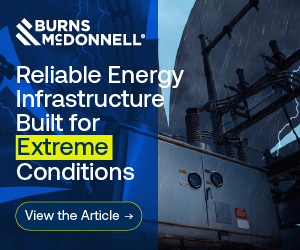The Future of Energy Usage
Karsten Barde is a Director of Policy & Regulatory Strategy for National Grid’s electric & gas utility businesses in New York and Massachusetts. Karsten helped lead clean energy innovation in the utility industry for twelve years, developing business strategy and policy, and launching new initiatives in electric transportation, grid modernization, distributed generation, building decarbonization, and the future of gas. He previously served as a manager in National Grid’s New Energy Solutions group and spent three years at Pacific Gas & Electric supporting Energy Procurement and Smart Grid teams with implementation of state energy and climate policy.
Courtney Eichhorst is a Principal Program Manager for the Future of Heat in National Grid’s Transformation Office. Courtney has held roles in regulatory and strategy, where she helped lead the development of decarbonization strategies and innovative regulatory models, including outcome-based performance incentives. She earned her MBA from Boston University, with a focus in Energy and Environmental Sustainability, and BS in Economics from Purdue University.
Sandy Grace is Vice President of US Policy and Regulatory Strategy for National Grid. Throughout her career in the energy and infrastructure industry, Sandy has held roles focusing on policy development, legislative and regulatory strategy, as well as transmission and microgrid investment opportunities. She spent nearly a decade in private law practice on complex commercial litigation and regulatory matters, representing and advising some of the nation’s largest energy companies on issues ranging from mergers and acquisitions, compliance, federal funding opportunities, and participation in wholesale energy markets.
Climate change is one of the most challenging crises of our time. The states in which we serve, New York and Massachusetts, have both committed to net zero greenhouse gas (GHG) emissions by 2050 (at least eighty-five percent below the 1990 level of emissions). As part of attaining this goal, state and local policymakers are taking important steps to enable future electrification of end uses, especially as it relates to heating in the building sector.

For this deep decarbonization in the building sector to occur, significant new electric grid investments will be needed, as will planning for the long-term future of gas distribution networks, which will play a critical role in supporting the energy transition.
As this work progresses, it is essential that policymakers and stakeholders recognize the integrated nature of today's energy system, which is comprised not only of diverse sources of generation but various delivery systems carrying molecules and electrons, which together form an interconnected system of systems. And, in recognition of this interconnected system of systems, plan for the future of our energy usage in an integrated manner.
Why is this important? Today, National Grid's gas delivery networks serve three times as much energy demand during the coldest hour of the winter as the electric grid provides to the same customers on the hottest hour of the summer. The regions we serve also currently rely on delivered fuels for about twenty-five percent of all building heating systems, representing a significant additional supply of heating energy that must be decarbonized.
In our April 2022 Clean Energy Vision report, we detailed a portfolio of multiple clean heating technologies we believe are required to achieve net-zero heating in our region by 2050, recognizing the potential for complementary roles of decarbonized gas and electricity in transforming the energy systems that keep our customers warm.
Importance of Integrated Energy Planning
 Karsten Barde: Innovative regulatory frameworks may be needed to enable targeted electrification at a scale meaningful enough to impact gas network planning.
Karsten Barde: Innovative regulatory frameworks may be needed to enable targeted electrification at a scale meaningful enough to impact gas network planning.
Over the last year, we've continued to develop more detailed scenario forecasts of potential future energy demand for both our electric and gas networks in Massachusetts and New York. As a result of this evaluation, we're increasingly recognizing the importance of integrated energy planning as a focus for our business planning and asset management organizations.
What do we mean by the term integrated energy planning? Fundamentally, it means incorporating and considering critical interactions between our gas, electric, and customer energy systems into our planning processes in the context of long-term climate goals.
Historically, planning for the safe, reliable, and affordable delivery of gas and electricity have been separate processes, conducted by separate teams with different tools and minimal co-ordination with customer demand-side programs. Looking to the future, we see the opportunity for a new integrated energy planning paradigm to shape the long-term trajectory of infrastructure investment toward both decarbonizing energy and optimizing spending across the whole energy system, while continuing to keep customer and community preferences in mind.
Evaluating Infrastructure Investment
To explore this opportunity, we believe a good first step is for combined gas and electric utilities to conduct preliminary engineering analyses of sample communities where they provide both services, evaluating the potential for cost savings if new gas infrastructure could be avoided by customers converting all their appliances to electricity.
 Courtney Eichhorst: We believe a good first step is for combined gas and electric utilities to conduct preliminary engineering analyses of sample communities where they provide both services.
Courtney Eichhorst: We believe a good first step is for combined gas and electric utilities to conduct preliminary engineering analyses of sample communities where they provide both services.
Many communities have substantial replacement of gas delivery infrastructure still planned to be done. These replacement programs are critically important to continuing to ensure the safe and reliable delivery of energy to customers; moreover, modernization of the system reduces leaks of methane in line with state climate goals.
However, in some communities, a push toward electrification would reduce utilization of new gas infrastructure over the medium-to-longer term, suggesting a need to evaluate potential alternative asset management strategies.
Based on our early research in this area, below are a few of our insights that we think will be important to test:
First, building up the grid today for fully electrifying an entire town may be prohibitively expensive compared to replacing aging gas infrastructure, given the need for new electric substations and widespread capacity upgrades. However, there are likely to be selected segments where electric network upgrades required to enable full electrification could be less expensive than replacing the gas infrastructure serving that neighborhood.
 Sandy Grace: We see the opportunity for a new integrated energy planning paradigm to shape the long-term trajectory of infrastructure investment.
Sandy Grace: We see the opportunity for a new integrated energy planning paradigm to shape the long-term trajectory of infrastructure investment.
Second, our customers and communities vary widely in their views on energy sources and energy infrastructure. While some customers are highly interested in the potential for a transition away from gas, others are less ready today for a variety of reasons, including the cost of building and appliance retrofits.
Under the existing regulatory framework, in order to decommission any given segment of the gas system, all customers served by that segment will need to voluntarily agree to disconnect from the gas system. Innovative regulatory frameworks may be needed to enable targeted electrification at a scale meaningful enough to impact gas network planning.
Third, municipalities could be potential partners in helping plan for coordinated energy transitions. For example, in some European cities such as Zurich, municipal heat decarbonization strategies developed by city leaders provide long-range signals to customers about specific neighborhoods targeted for different types of energy solutions in the future and provide generous public (such as taxpayer) support for these customer conversions.
Finally, our system planners need additional tools to conduct integrated energy planning, such as planning software that can incorporate diverse data sources, account for cross-network dependencies, and consider a wide range of future scenarios in developing optimization analyses. We've begun validating and testing a software tool that can support some of these functions but expect to require ongoing technical development as we progress our plans.
Opportunities for Policymakers and Regulators
To chart the course toward more effective energy planning in the context of our shared climate goals, policymakers and regulators could act now to start enabling meaningful integration of energy planning at both the macro and micro levels, by:
Fostering coordination between different gas and electric utilities that both serve the same customers, in order to optimize long-range investment plans;
Supporting investments in new tools and capabilities that allow for integrated energy planning;
Enabling targeted electrification pilots and other non-pipeline alternatives to inform future regulatory frameworks and identify best practices and protocols for data sharing and joint-utility planning and execution;
Recognizing that the current regulatory framework does not facilitate coordinated planning or provide for the cost allocation and recovery mechanisms across customers of each of the currently distinct systems in a manner that recognizes the relationship and value of each of these systems to each other; and
Advancing localized or community energy plans that identify potential long-term optimal portfolios of heating solutions for a given community, together with the policies, incentives and protections needed to support all customers through large-scale transitions.
In conclusion, by embracing the opportunities for integrated energy planning, we can help ensure that our energy delivery remains safe, reliable, resilient, and affordable, while addressing our collective climate goals.




